1. Meat Thermometer (Analog)
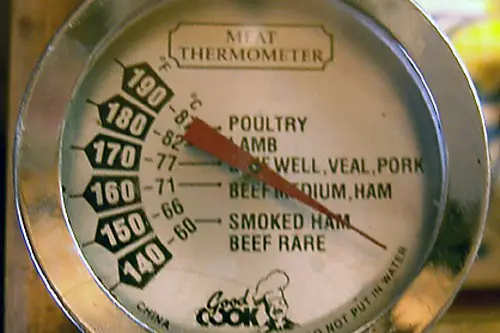
Digital meat thermometers are great, but analog ones? They’re wildly inaccurate and slow. Most people don’t calibrate them properly and end up overcooking or undercooking their food anyway. They also fog up and get greasy fast, making them hard to read. And who has time for that when you’re managing four burners and a roast?
Despite that, they’re still included in tons of utensil sets and passed down from old kitchen drawers. Most folks default to the “cut and check” method or just Google the cook time. So the analog thermometer ends up untouched—unless someone’s really committed to Sunday pot roast science. Even then, they probably wish they had the digital version instead.
2. Fondue Set
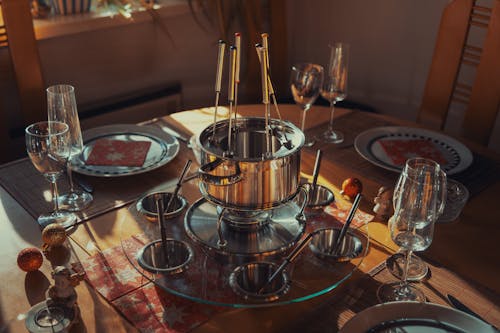
Fondue sets seem like a fun idea—until you realize no one really wants to clean up molten cheese. They’re often gifted during weddings or holidays and immediately shelved behind the crockpot. The dream of a cozy fondue night fades fast when you need to buy special fuel or find obscure cheese blends. Let’s be honest: it’s faster to just microwave some queso.
Despite good intentions, these sets are clunky, hard to store, and way too much work for what ends up being a mess. Most households keep them in the back of a cabinet “just in case” guests come over, which never happens. Also, the skewers are often mismatched or missing by year two. So they sit, collecting dust, while nachos remain the go-to cheese experience.
3. Ice Cream Maker

Buying an ice cream maker feels like a wholesome, family-friendly idea—until you use it once and realize it’s kind of a pain. You need to pre-freeze parts for hours, make a custard base, chill it overnight, and then churn for 30 minutes. By then, you could’ve driven to the store and back twice. It’s a classic case of overestimating your culinary ambition.
Most people use it once during a summer burst of enthusiasm and then never again. It’s also big and awkward to store, so it ends up in the garage next to the camping gear. And while the ice cream tastes fine, it’s rarely better than what you can get at the grocery store. Unless you’re a die-hard DIY dessert person, it’s not worth the hassle.
4. Mandoline Slicer
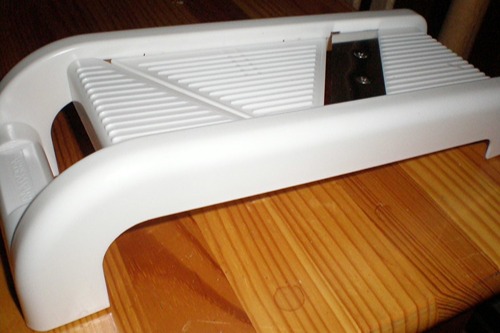
Mandolines are known for one thing: slicing vegetables really thin and cutting fingers even faster. They promise precision, but most people fear them more than they use them. Between setting it up, cleaning it, and keeping all ten fingers, it’s just easier to grab a knife. Also, the safety guard is usually missing by the time you remember you even own one.
Sure, chefs swear by them for perfect julienned carrots or scalloped potatoes, but home cooks rarely need that kind of precision. And let’s be real—who’s cooking something that fancy on a weeknight? It’s usually pasta and salad, not a seven-layer gratin. So the mandoline lives in a drawer, untouched and intimidating.
5. Bread Maker
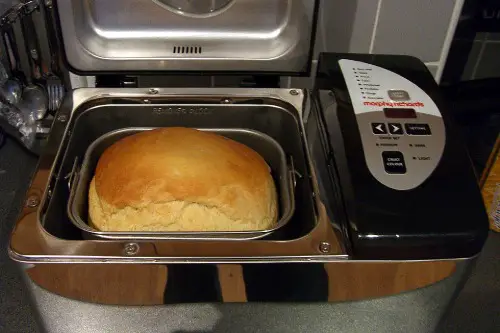
Bread makers surged in popularity during the early 2000s and again during lockdown—but most are now glorified paperweights. They take up a ton of counter space and make oddly shaped loaves that still require slicing. Plus, the ingredients aren’t cheap, and the results are inconsistent unless you’ve mastered the art. And don’t even get started on the cleanup.
The kneading paddle usually bakes into the bread, so you’re fishing that thing out of your loaf every time. And since bread lasts a while from the store, people default to buying instead. It’s also hard to justify running a whole machine when a $3 baguette is down the street. So into the pantry it goes, next to the juicer you also don’t use.
6. Juicer
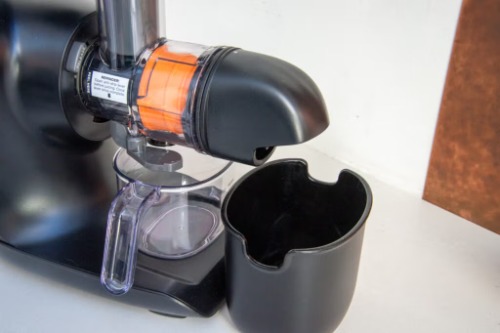
Speaking of juicers: they’re the darling of New Year’s resolutions and the bane of anyone who’s ever tried to clean one. Making juice at home sounds virtuous until you’re scrubbing pulp out of 17 different parts. Not to mention it takes five oranges to get one glass of juice. And that’s before you realize you’re spending $8 on produce to get $2 worth of juice.
Most people try juicing for a week, maybe two, then give up when the celery stinks up the fridge. Juicers are large, heavy, and rarely fit in standard cabinets. And unless you’re prepping for a juice cleanse, they’re just not part of a realistic daily routine. The result? They’re stashed away, often in original packaging.
7. Salad Spinner
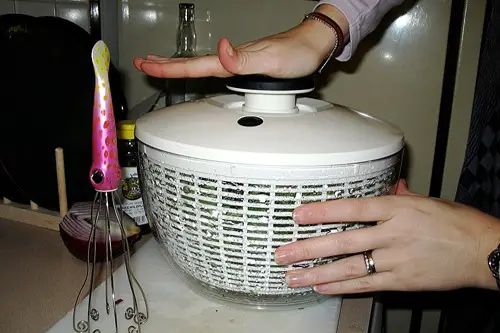
Salad spinners are loud, awkward, and somehow always missing a part. They’re supposed to make lettuce prep faster, but the washing and drying still take time—and paper towels work just fine. Plus, they take up way too much cabinet space for something that’s only used when someone’s really committed to crunchy greens. And who is?
In many kitchens, they’ve become a kind of tupperware graveyard, holding other items inside. Or they’re used once for a dinner party salad, then abandoned. The truth is most Americans don’t eat enough salads to justify the hassle. So it stays, unused, unless someone’s feeling especially inspired after a farmer’s market run.
8. Wok

The wok seems like a cool tool for stir-frying, but most American stovetops aren’t built for it. Without high heat and a gas flame, you’re basically using a large, curved pan inefficiently. Most people also don’t season them properly or know how to cook with one without overcrowding. So the food steams instead of fries, and the wok gets blamed.
It’s a classic example of good intention meeting poor execution. After one or two attempts, it gets pushed to the back of the cabinet. Plus, they’re oddly shaped and don’t fit anywhere neatly. So people go back to their nonstick skillet and pretend the wok isn’t sitting there like a culinary guilt trip.
9. Egg Separator
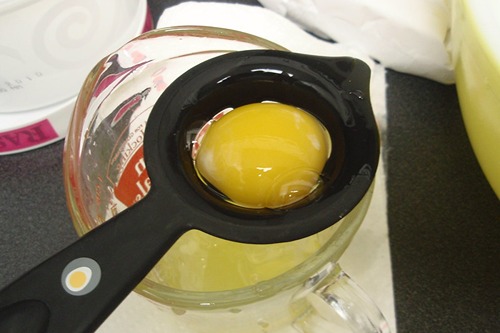
Egg separators seem clever—until you realize your hands or the eggshell do the same job, just as fast. They’re usually plastic, sometimes shaped like a chicken or a smiley face, and they live in the “junk utensil” drawer. It’s another one of those tools that feels necessary for about five seconds. Then it’s forgotten entirely.
Unless you’re baking meringues every weekend, you won’t use it often enough to make it worth washing. Plus, most of the time they just don’t work well—the yolk breaks or the whites cling. People typically use it once, make a mess anyway, and never go back. It’s the poster child of kitchen gadgets that seem smart but fail in practice.
10. Electric Can Opener
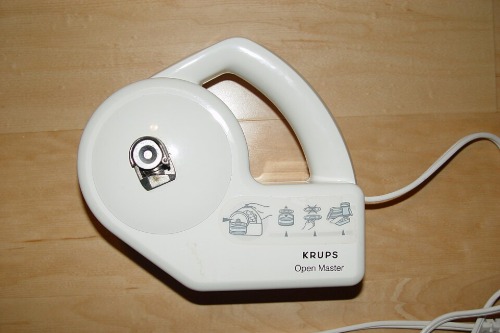
Electric can openers had their moment in the ’80s, but manual versions have firmly reclaimed the throne. They’re bulky, they take up counter space, and unless you have mobility issues, they’re not much more convenient. They also tend to get gross fast—gunk builds up around the blade, and no one wants to clean that. And let’s not forget the mystery of how to reattach the blade if it pops out.
Most Americans already have a reliable hand-held can opener in their drawer that works just fine. The electric one? It’s often buried in the pantry or stashed on a shelf above the fridge. You’ll only hear someone admit to using it if they’re opening a dozen cans of beans at once. Spoiler: that never happens.
11. Popcorn Maker
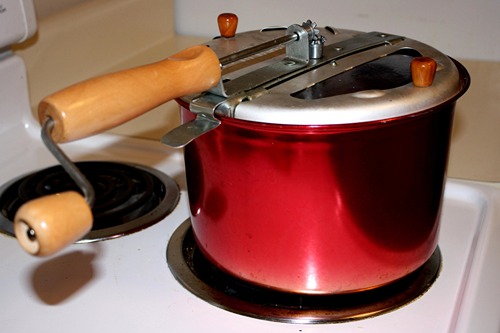
Popcorn makers used to be fun novelty items, but microwave popcorn changed the game. These machines take up too much space for something you can make in a bag in three minutes. And they usually require oil, butter, and cleanup—which totally defeats the “easy snack” appeal. Also, have you ever cleaned one? Not fun.
Most people try it once or twice for nostalgia, then realize the microwave version tastes nearly the same. Plus, air poppers tend to shoot kernels everywhere if you’re not careful. Unless you’re throwing retro movie nights every week, it’s not a good investment. So it sits in the back of the cabinet, just another monument to snack-related optimism.
This post 11 Things Found in Every American Kitchen That No One Actually Uses was first published on American Charm.


